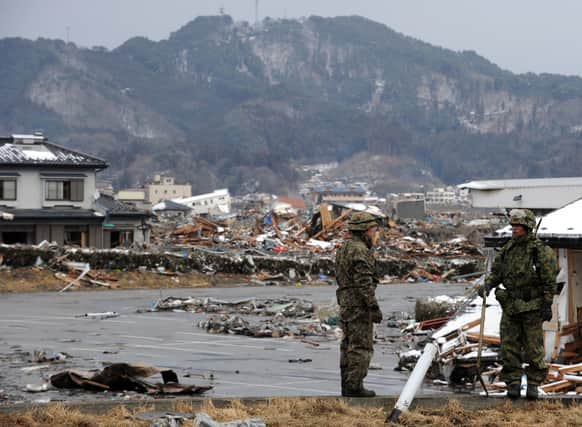Japan Tsunami 2024: what are the biggest tsunami waves ever recorded, and is Tohoku on the list?


The West coast of Japan, including the Ishikawa Prefecture, has faced the start of 2024 by taking to higher ground as tsunami warnings were issued after a 7.5 magnitude earthquake struck off the coast of Japan earlier this morning.
NHK, Japan’s leading news outlet, has confirmed that the Japanese defence ministry has now issued warnings that more earthquakes may occur over the next two to three days due to the region experiencing regular seismic activity for over three years.
Advertisement
Hide AdAdvertisement
Hide AdThe tsunami warning is the first issued after the devastating events that occurred in 2011, after tsunamis swept across the Tohoku region of Japan, killing 18,000 people and erasing smaller settlements within prefectures along North East Japan due to the sheer strength of the surge waters inland.
Those in affected areas have been advised to seek higher ground, with waves of 5m expected to hit the Noto Peninsula area of Ishikawa Prefecture; though not the same height as other tsunamis that have struck areas around the Pacific Ring of Fire, the force of the wave looks to swell rivers around Western areas and as Japan enters it’s first nightfall of 2024, more waves have been estimated to follow and are expected to rush up slopes and grow in size.
What was the biggest tsunami ever recorded?
The largest and most destructive tsunami ever recorded occurred on July 9, 1958, in Lituya Bay, Alaska, USA. This event is commonly referred to as the Lituya Bay Mega-Tsunami. The tsunami was triggered by a massive landslide caused by an earthquake with an estimated magnitude of 7.8.
The landslide involved an estimated 40 million cubic yards (30.6 million cubic meters) of rock and ice falling into the bay. The impact generated a wave that reached an astounding height of approximately 1,720 feet (524 meters) as it swept over the mountainous terrain surrounding Lituya Bay. This wave is the highest tsunami wave ever documented.
Advertisement
Hide AdAdvertisement
Hide AdFortunately, the remote location of Lituya Bay and the sparsely populated area limited the loss of life - only two people were reported to have died during the natural disaster. Lituya Bay would also record the fifth biggest tsunami ever recorded almost 60 years prior.
Where do the Tohoku and Indian Ocean place in terms of the biggest tsunamis ever recorded?
They are considered to be the second and third largest tsunamis to ever be recorded, following behind the 1958 Lituya Bay tsunami.
- Lituya Bay Mega-Tsunami (1958): 524 meters (1,720 feet)
- Indian Ocean Tsunami (2004): some areas experienced waves over 100 feet (30 meters).
- Tohoku-Oki Tsunami (2011): waves reached 133 feet (40.5 meters) in some areas.
- Krakatoa Tsunami (1883): waves reached heights of up to 130 feet (40 meters).
- Lituya Bay Tsunami (1896): estimated to have reached 100 feet (30 meters).
Where does the 2024 New Year’s Day tsunami place in terms of tsunamis that have struck Japan?
The Great East Japan Earthquake and it’s tsunami waves is still considered the strongest tsunami on record to have ever hit Japan in its recorded history, with the 2024 New Year’s Day tsunami not making it into the five biggest waves that have ever hit the country.
- Tōhoku Earthquake and Tsunami (2011): over 130 feet (40 meters) in some areas.
- Sanriku Earthquake and Tsunami (1896): up to 125 feet (38 meters).
- Nankai Earthquake and Tsunami (1707): no estimate in wave heights but wide-scale damage was reported
- Tango Earthquake and Tsunami (1927): around 90 feet (27 meters).
Comment Guidelines
National World encourages reader discussion on our stories. User feedback, insights and back-and-forth exchanges add a rich layer of context to reporting. Please review our Community Guidelines before commenting.
